22 Of The Smallest Engines Ever Put In A Car
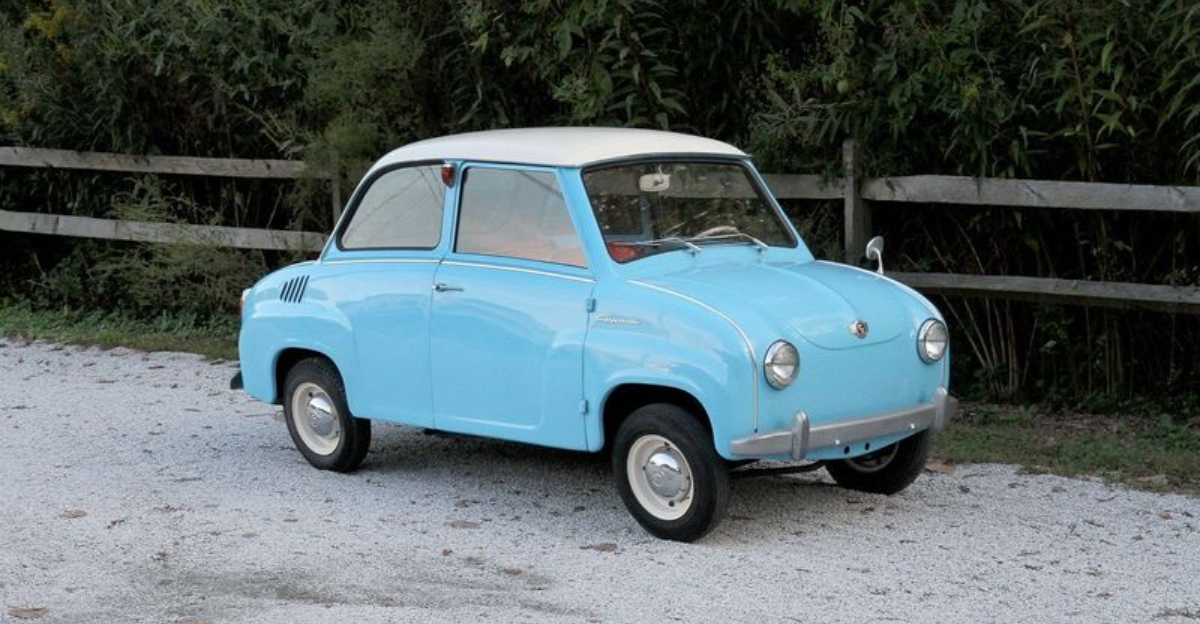
Some engines are so tiny, you’d swear they belong in a lawnmower, not under the hood of a car.
I once rode in an old three-wheeled microcar that sounded like a sewing machine on espresso. It barely hit 40 mph downhill with a tailwind, but the experience was unforgettable.
These pint-sized powerplants weren’t built for speed, but for squeezing every mile out of a thimble of fuel.
They made up in charm what they lacked in cylinders, and somehow, they still managed to get people where they needed to go, with just enough drama to keep things interesting.
1. Peel P50
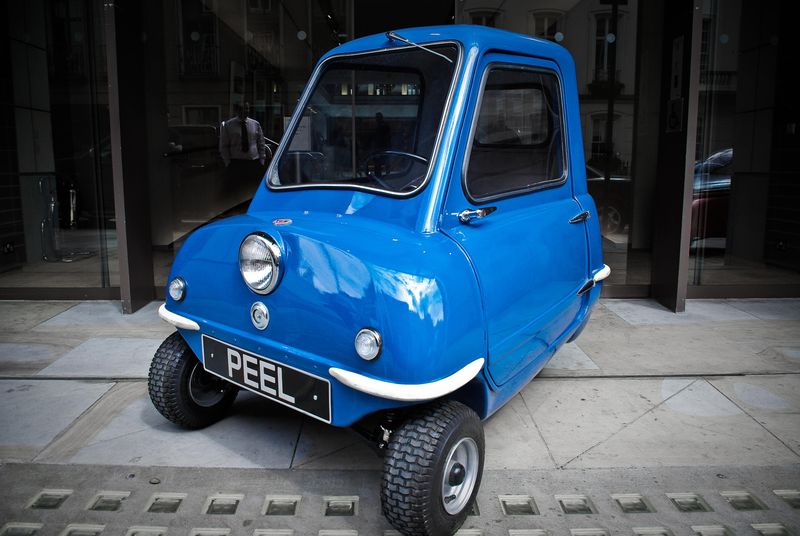
Hold onto your hats, folks – the Peel P50 takes the crown as the smallest production car ever made, sporting a microscopic 49cc engine that wouldn’t look out of place in a hefty chainsaw.
This British three-wheeler from the Isle of Man could reach a blistering top speed of 38 mph, which feels plenty fast when you’re essentially driving a glorified helmet.
The single-cylinder DKW engine produced a whopping 4.2 horsepower – barely enough to power a ceiling fan.
2. Messerschmitt KR200
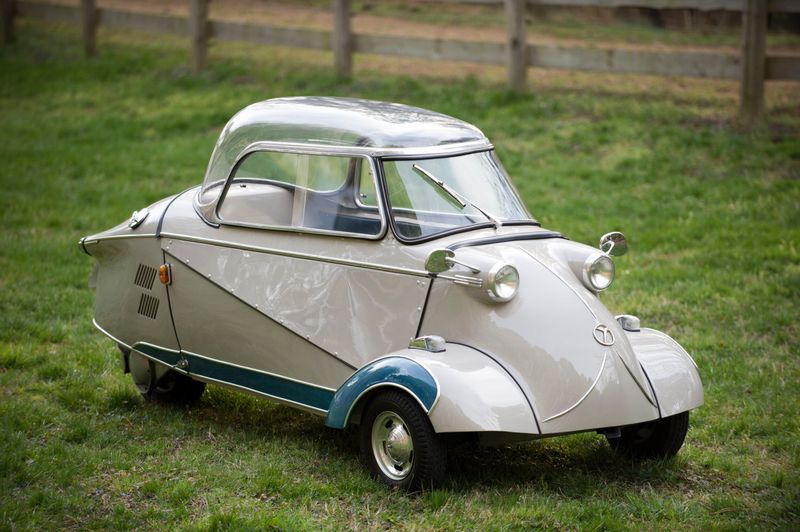
Fighter plane manufacturer Messerschmitt switched to bubble cars after WWII, creating this peculiar three-wheeler with aircraft-inspired design.
The KR200’s tiny 191cc two-stroke engine somehow managed to push this tadpole-shaped oddity to speeds over 60 mph.
Nicknamed the ‘Kabinenroller’ (cabin scooter), it featured tandem seating and a fighter plane-style plexiglass canopy.
Drivers steered with motorcycle-style handlebars, making every journey feel like piloting a land-bound torpedo with barely enough power to climb hills.
3. Bond Minicar
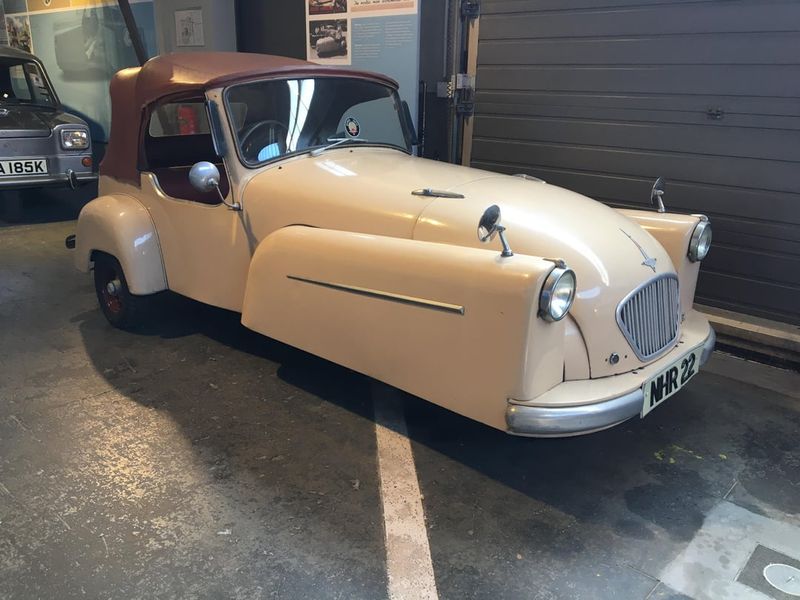
Looking more like an escapee from a carnival ride than a proper vehicle, the Bond Minicar packed a lawnmower-worthy 197cc Villiers engine.
This British three-wheeler offered the bare minimum of what could legally be called transportation.
Early models lacked reverse gear, forcing drivers to either plan their parking very carefully or get out and physically turn the car around.
The tiny powerplant dangled off the front wheel, creating a distinctive put-put sound that announced your arrival long before you were visible.
4. Isetta 250
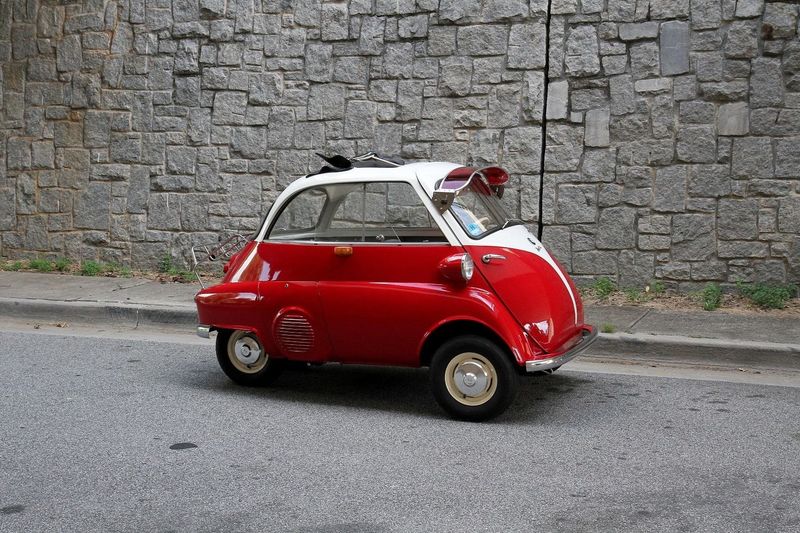
Affectionately nicknamed the ‘bubble car,’ BMW’s Isetta 250 turned heads with its refrigerator-style front door and 247cc motorcycle engine tucked in the rear.
Post-war Europeans embraced this quirky transportation solution that could squeeze 70 miles from a single gallon of fuel.
The entire steering column swung outward with the door, making entry an acrobatic event worth watching.
Inside, two passengers sat shoulder-to-shoulder on a bench barely wider than a love seat, while the single-cylinder engine buzzed away like an industrious bee.
5. Goggomobil T250
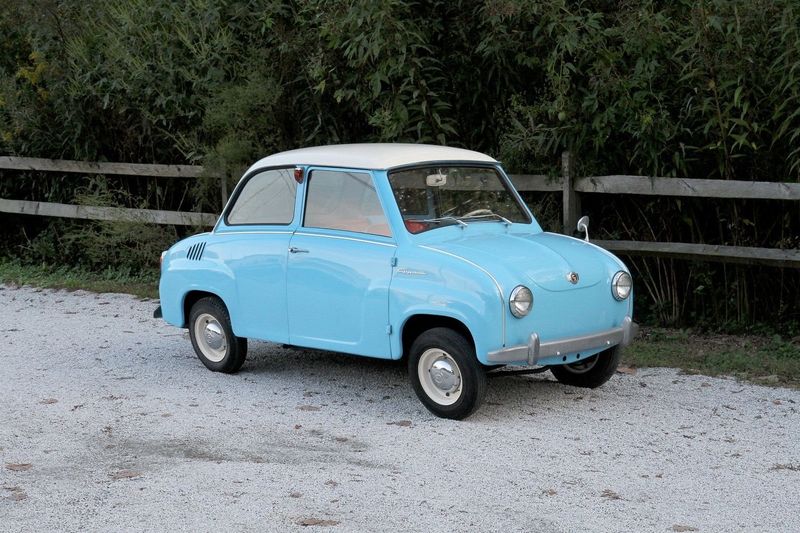
Germany’s adorable Goggomobil T250 packed a pint-sized 245cc two-stroke engine that somehow managed to propel four people – provided they were very good friends.
The diminutive powerplant produced a mighty 14 horsepower, enough to reach highway speeds if you had sufficient patience and a favorable tailwind.
Despite its toy-like appearance, the Goggo was a legitimate family car with four doors and actual usable space.
The engine’s distinctive ring-ding-ding sound became the soundtrack of German economic recovery in the 1950s, while drivers prayed they wouldn’t encounter any steep hills.
6. Citroën 2CV
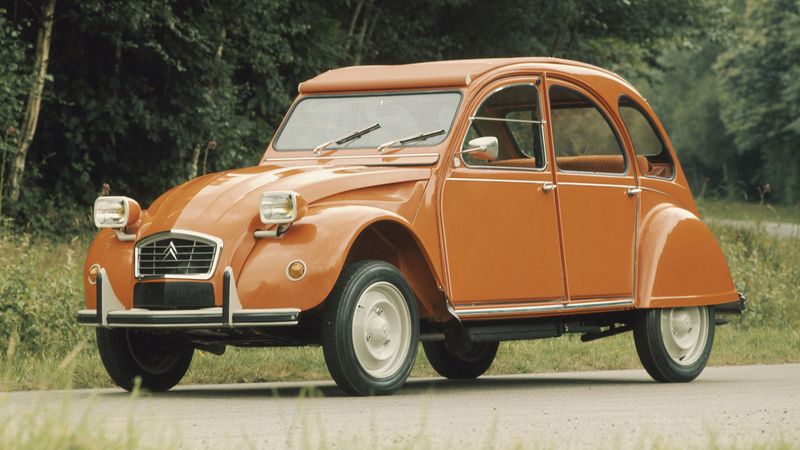
France’s iconic ‘deux chevaux’ initially puttered along with a 375cc flat-twin engine that produced a leisurely 9 horsepower – roughly equivalent to nine actual horses hitched to your car.
Originally designed to help farmers transport eggs across bumpy fields without breaking them, the 2CV’s suspension was softer than a fresh baguette.
The air-cooled engine sounded like a sewing machine on steroids but proved nearly indestructible.
Citroën claimed the car could cross a plowed field while carrying a basket of eggs undamaged – a peculiar but practical benchmark that endeared it to rural French families for generations.
7. Vespa 400
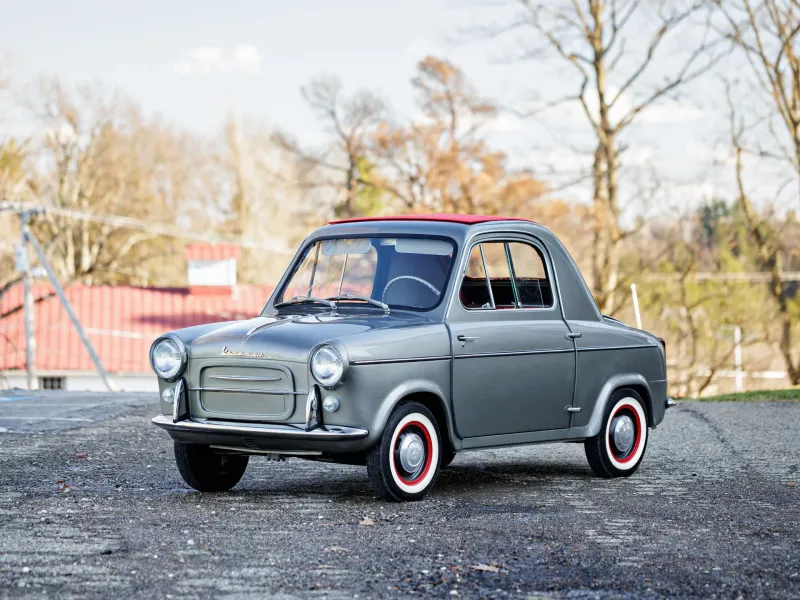
From scooters to cars, Vespa decided to expand their empire with the adorable 400 microcar powered by a buzzy 393cc two-stroke engine.
This rear-engined cutie could theoretically reach 50 mph, though you’d need nerves of steel to attempt it.
The fabric sunroof wasn’t just a stylish feature – it provided a vital escape hatch if the doors got blocked after an accident.
With two tiny seats up front and a child-sized bench in back, the Vespa 400 proved that Italian design flair could exist even in the smallest automotive packages.
8. Honda N360
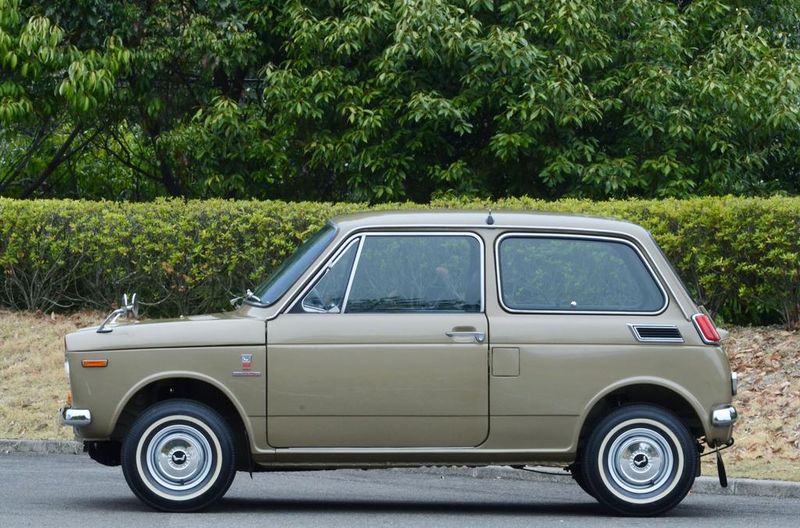
Honda’s motorcycle expertise translated perfectly to their N360 kei car, which featured a microscopic 354cc two-cylinder engine that revved to a motorcycle-like 8,500 RPM.
The air-cooled powerplant sounded like an angry sewing machine but delivered performance that belied its size.
Japanese buyers fell in love with this front-wheel-drive box that could squeeze through Tokyo’s narrowest streets.
The N360’s engine was essentially half of a Honda motorcycle engine, complete with four carburetors – an engineering approach that gave this tiny car surprising pep and a distinctive high-pitched wail.
9. Subaru 360
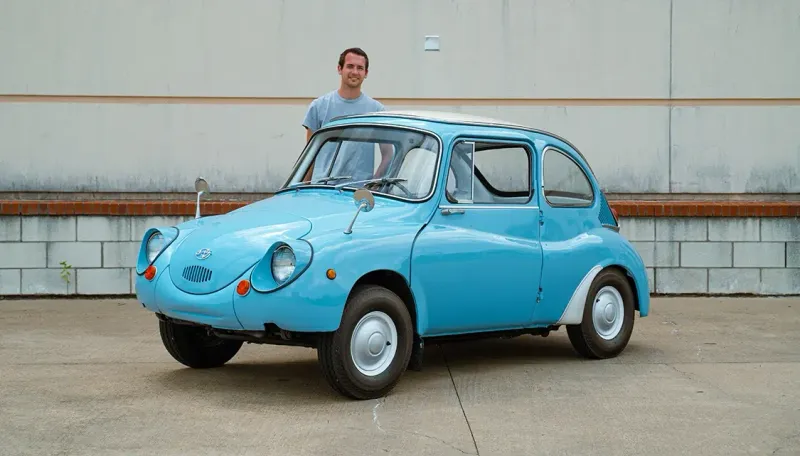
“Cheap and ugly” proudly proclaimed the American advertisements for Subaru’s first car, the 360, powered by a minuscule 356cc two-stroke engine mounted in the rear.
This Japanese kei car weighed less than 1,000 pounds and somehow achieved 66 mpg decades before hybrid technology.
The air-cooled powerplant produced a mighty 16 horsepower – enough to reach 55 mph if you were patient.
Despite looking like a cartoon car, the 360 established Subaru in the automotive world, though American drivers found its lack of power terrifying on highways dominated by massive V8 land yachts.
10. Mazda R360
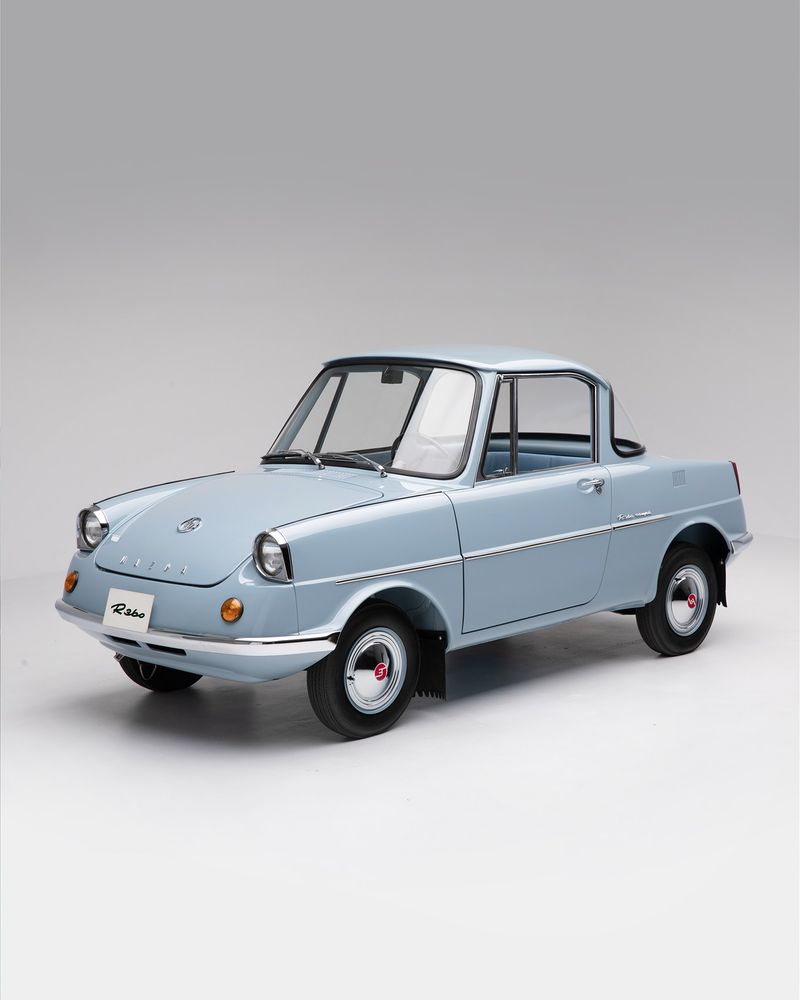
Before rotary engines became their claim to fame, Mazda built the R360 coupe with a tiny 356cc V-twin engine that was smoother than a jazz saxophone.
This rear-mounted powerplant produced just 16 horsepower, but in a car weighing less than 900 pounds, that was enough for surprisingly sprightly performance.
The R360 became Japan’s best-selling car in 1960, offering luxury features like a four-speed transmission when competitors made do with three.
The V-twin configuration gave it a unique sound – less buzzy than other microcars and more like a miniature American V8 with a head cold.
11. Daihatsu Fellow Max
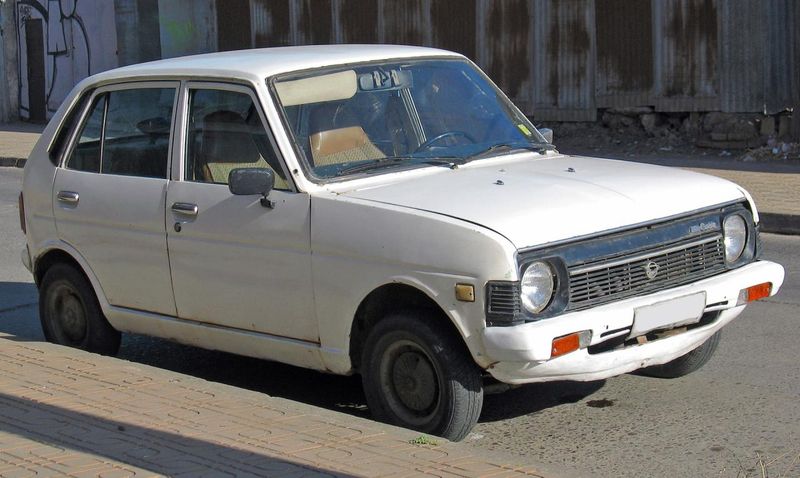
Sporting a peppy 356cc two-stroke engine, the Daihatsu Fellow Max proved that good things come in packages small enough to fit in your pocket.
This kei-class contender became famous for its “kei car hot rod” SS model that somehow extracted 40 horsepower from an engine smaller than a bread box.
The Fellow Max sported styling inspired by the Mini Cooper but shrunk down to impossibly cute proportions.
Despite its diminutive powerplant, it featured racing stripes and a tachometer redlined at a motorcycle-like 8,500 RPM – encouraging drivers to wring every last horsepower from its tiny heart.
12. Suzuki Fronte

Suzuki’s Fronte squeezed a 359cc two-stroke engine into a package that resembled a child’s drawing of a car come to life.
This three-cylinder microcar became famous when former Grand Prix champion Stirling Moss drove one flat-out on Italy’s Autostrada del Sole for a publicity stunt.
The rear-mounted engine gave the Fronte a distinctive blue smoke trail and a sound like an angry chainsaw orchestra.
Later models featured a “sporting” version called the SSS with twin carburetors boosting output to a mighty 37 horsepower – turning this tiny transportation pod into a surprisingly capable pocket rocket.
13. Mitsubishi Minica

Mitsubishi’s Minica started life with an air-cooled 359cc two-stroke engine that sounded like a blender full of angry bees.
This kei car’s powerplant initially produced just 17 horsepower, but later “Super Deluxe” models bumped that all the way to 18 – progress!
The rear-mounted engine turned this tiny box into a surprisingly fun handler, with the weight over the drive wheels providing excellent traction.
Early models featured quirky rear-hinged “suicide doors” and styling that could charitably be described as “functional.”
14. Fiat 500 (Cinquecento)
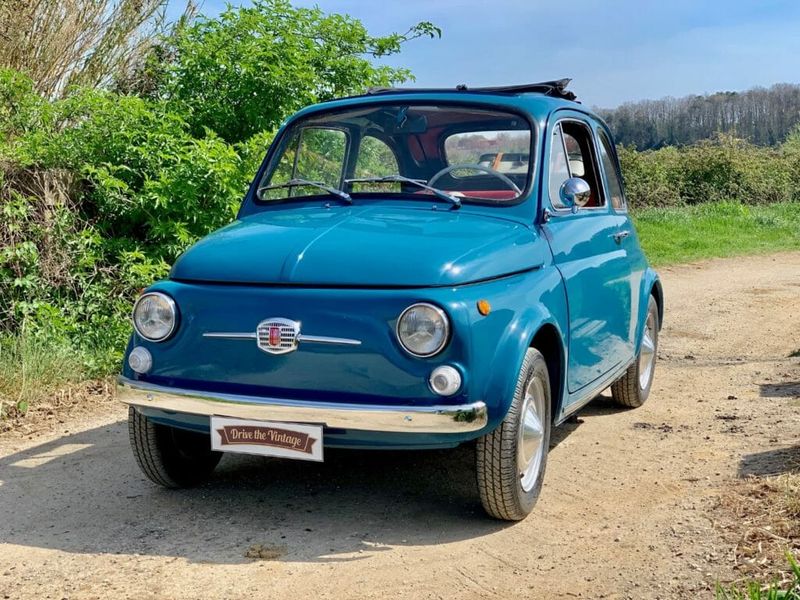
Italy’s answer to affordable motoring came in the form of the original Fiat 500, powered by a 479cc air-cooled twin that sounded like an espresso machine having a panic attack.
This rear-mounted powerplant produced just 13 horsepower – barely enough to overcome a stiff headwind.
Despite its limited power, the tiny Cinquecento became an icon of Italian style and ingenuity.
The engine’s location created a distinctive putt-putt soundtrack that echoed through narrow Italian streets for decades.
With a top speed of around 55 mph, highway driving was theoretically possible but felt like attempting to cross the Atlantic in a bathtub.
15. BMW 600
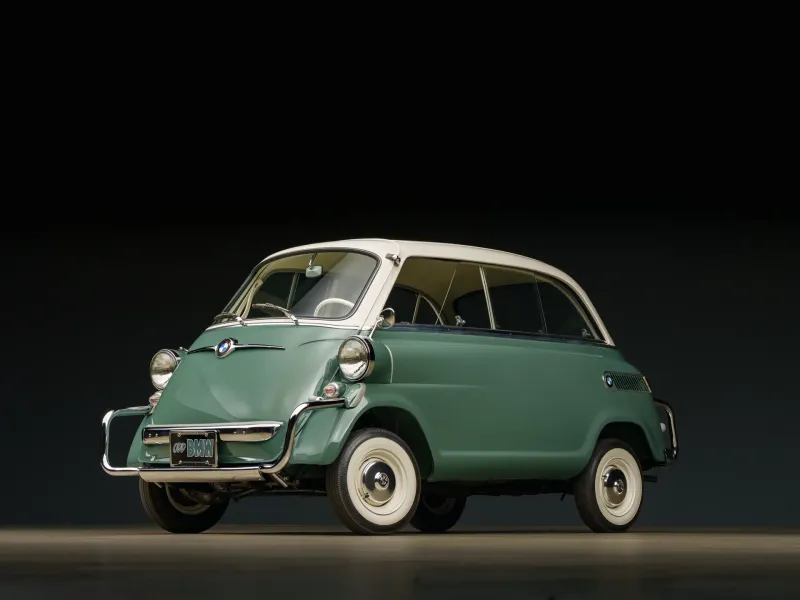
BMW took their Isetta bubble car and stretched it like taffy, adding a rear bench seat and a slightly less microscopic 582cc flat-twin engine borrowed from their motorcycle division.
The result was the 600 – a car that looked like an Isetta that had swallowed its twin.
Despite still entering through a refrigerator-style front door, passengers could now exit through a conventional side door.
The air-cooled boxer engine produced a mighty 19.5 horsepower, enough to push this microcar to 62 mph while making a sound reminiscent of two angry bees fighting in a tin can.
16. NSU Prinz
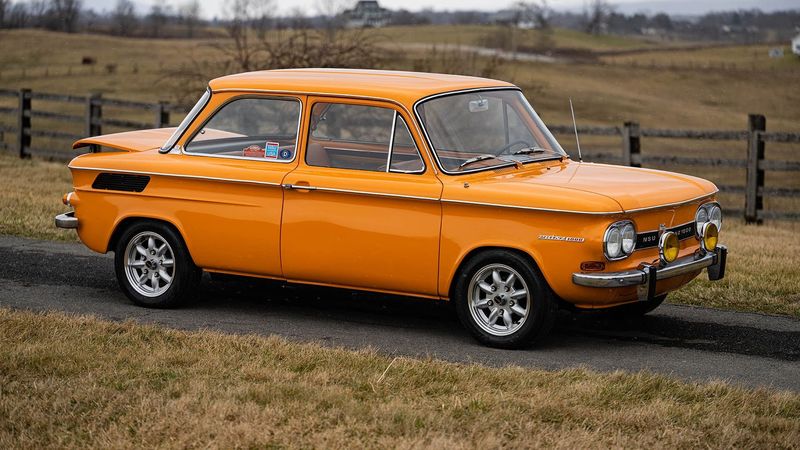
Germany’s NSU Prinz packed a rear-mounted 583cc air-cooled twin that made this microcar sound like a giant angry sewing machine.
The tiny powerplant somehow produced 20 horsepower – enough to push this miniature sedan to highway speeds while consuming fuel like it was rationed.
Later models adopted styling clearly “inspired by” the Chevrolet Corvair, earning it the nickname “Corvair in a dryer.”
The engine’s location behind the rear axle gave the Prinz handling characteristics best described as “adventurous,” with a tendency to swap ends if cornered enthusiastically – a hair-raising experience in a car smaller than some modern motorcycles.
17. Reliant Regal
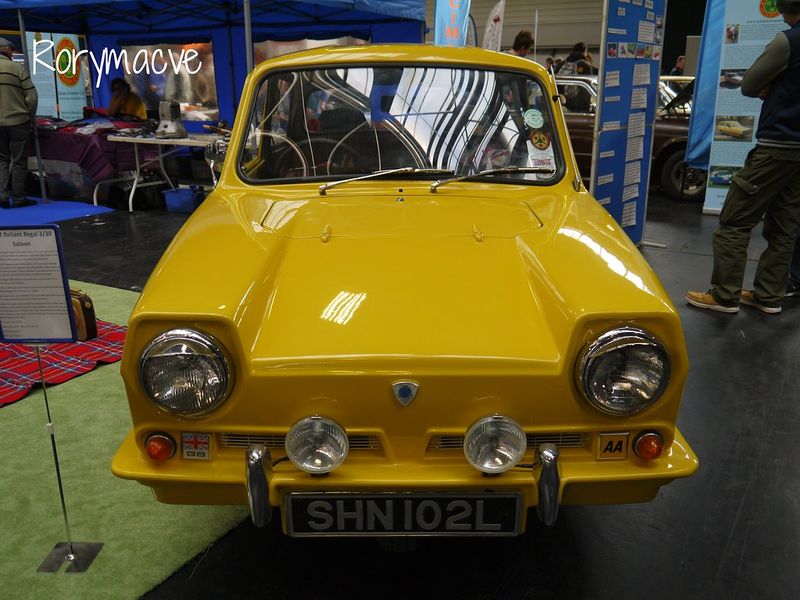
Famous as Mr. Bean’s arch-nemesis, the three-wheeled Reliant Regal powered its single front wheel with a 598cc engine that produced a mighty 23 horsepower.
This British oddity achieved fame for its propensity to tip over during enthusiastic cornering – a design feature, not a bug, according to some wags.
The aluminum engine was surprisingly advanced for its time, featuring an overhead valve design in an era when side-valves were common.
Despite being the butt of countless jokes, the Regal offered genuine car-like features in a package that could be driven on a motorcycle license in the UK – making it the perfect loophole vehicle for drivers who’d lost their car license.
18. Smart Fortwo (1st Gen)
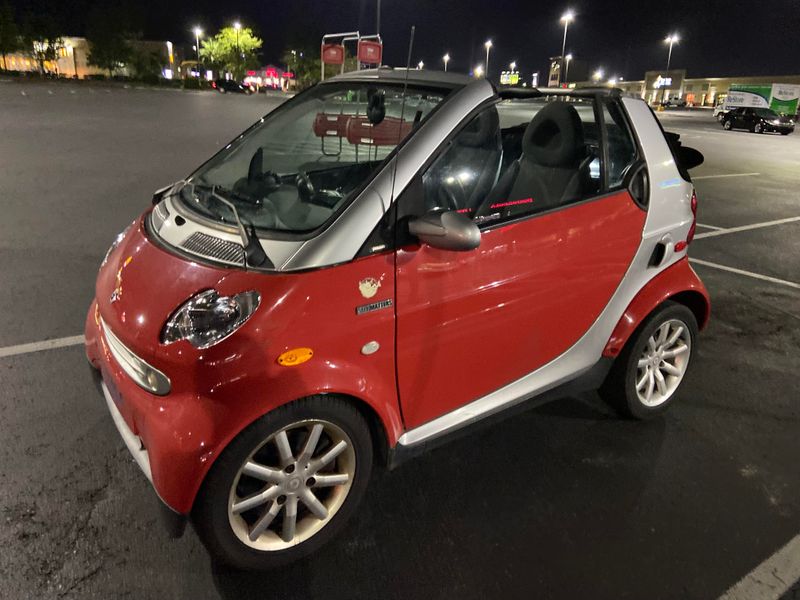
Mercedes-Benz proved small engines hadn’t gone extinct with the first-generation Smart Fortwo, packing a rear-mounted 599cc three-cylinder turbo engine that produced a respectable 45 horsepower.
This modern microcar became famous for parking perpendicular to the curb in tight European cities.
The tiny powerplant sounded like a sewing machine with anger management issues, especially when paired with the jerky automated manual transmission.
Despite its diminutive size, the engine pushed the Smart to autobahn-worthy speeds, though high-speed driving felt like piloting a shopping cart with a rocket strapped to it.
19. Tata Nano
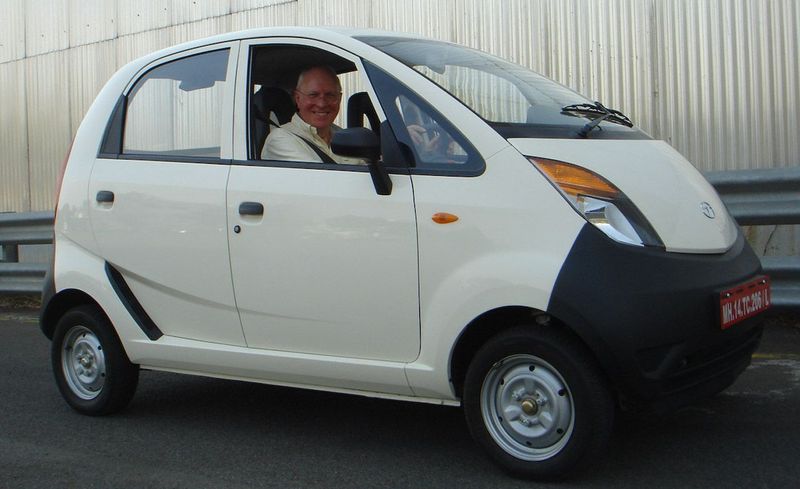
Billed as the world’s cheapest car, India’s Tata Nano packed a rear-mounted 624cc two-cylinder engine that produced a leisurely 33 horsepower.
This modern microcar cost less than $2,500 when new – cheaper than many optional extras on luxury vehicles. The tiny aluminum powerplant made a sound like a moped with delusions of grandeur.
Despite its budget nature, the engine featured modern touches like multi-point fuel injection and a balanced design to reduce vibration.
Top speed was limited to 65 mph – a blessing considering the car’s minimalist approach to safety features and crash protection.
20. Crosley Hotshot

America’s rare foray into microcars, the Crosley Hotshot featured a 724cc engine that was the first mass-produced overhead camshaft engine in America.
This tiny sports car weighed just 1,100 pounds and could reach 50 mph in a leisurely 16.9 seconds – practically a land speed record for microcars of the era.
The engine featured an unusual copper-brazed steel block dubbed the “CoBra” that unfortunately had a tendency to spring leaks when the copper corroded.
Despite its diminutive size, the Hotshot won the Index of Performance at the 1950 Six Hours of Sebring endurance race – proving that sometimes the tortoise really does beat the hare.
21. ZAZ Zaporozhets
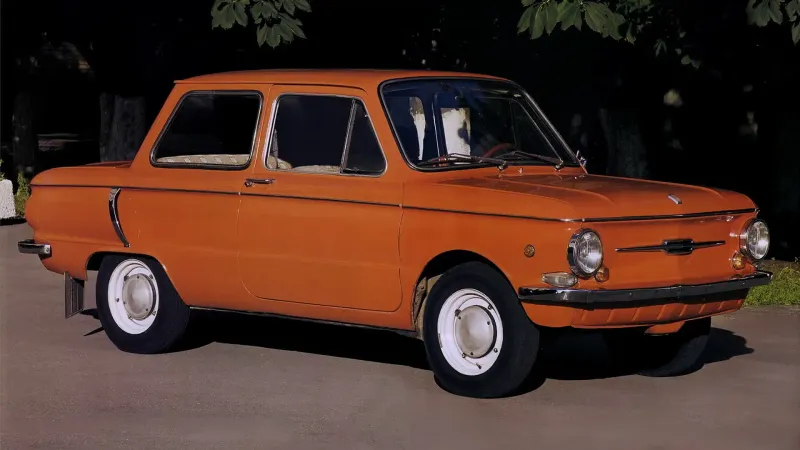
Soviet engineering produced the ZAZ Zaporozhets, powered by a 746cc air-cooled V4 engine that sounded like a cement mixer full of loose bolts.
This Ukrainian microcar became known as “the hunchback” thanks to its distinctive rear engine compartment bulge.
The air-cooled powerplant allowed owners to wrap the engine in a blanket during brutal Russian winters to retain heat – a feature no Western car manual ever needed to mention.
Folklore claims the car’s doors were specifically designed to be removed and used as emergency sleds, though this was likely just owners making the best of quality control issues.
22. Renault 4CV
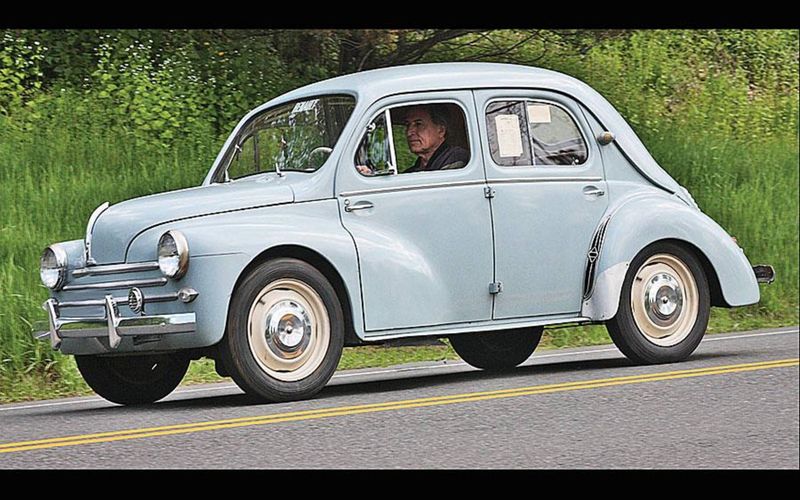
Designed in secret during the German occupation of France, the Renault 4CV emerged after WWII with a rear-mounted 747cc engine producing a leisurely 17 horsepower.
French engineers hid the prototype’s parts from Nazi inspectors, assembling it clandestinely – automotive resistance at its finest!
The water-cooled four-cylinder gave this “people’s car” a distinctive burbling exhaust note unlike the lawn-mower sound of many contemporaries.
Nicknamed “the lump of butter” due to its rounded shape, the 4CV became France’s first true mass-produced car, with over a million built despite its engine having less displacement than many modern motorcycle engines.
